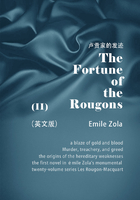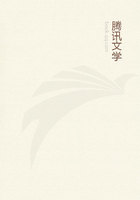Butter. In our recipes, butter is identified as unsalted or salted. Traditionally, butter contained salt because it extended its shelf life, but now we have refrigerators for that. There's not much reason to use salted butter these days, and we prefer unsalted because it gives us more control over the seasoning process. Using salted butter is totally fine; just use less salt elsewhere in the recipe and adjust accordingly. One thing to keep in mind: Salted butter tends to contain more water, and therefore less butterfat, and therefore less flavor.
Eggs. Our recipes are made with "large" chicken eggs unless otherwise noted, but this really matters only in precise baking recipes. Otherwise, use whatever you have.
Flour. We prefer unbleached, all-purpose flour over the more common bleached variety, not because it's more "authentic" nor because it's free of the chemicals used to bleach flour, which haven't been proven to cause any harm (though some folks swear they can taste the difference between the two). From our experience, we've found that unbleached flour gives baked goods a little better structure. In short, use whatever you have on hand, but look for unbleached flour next time you need to stock up.
Pepper. If there's one ingredient about which we're going to be extra particular (at risk of sounding like snobs), it's pepper. Freshly ground pepper is so superior to the pre-ground stuff, and it's so easy to keep a pepper grinder on hand, that there's simply no use for that stuff in the tin box, ever. When it comes to measuring pepper, we find that it takes about 35 cranks of the mill to get 1 teaspoon of medium-coarse pepper. If we need a bunch of pepper, we'll grind a tablespoon of peppercorns in a spice mill before we start cooking. But the best thing you can do when it comes to this (or any) seasoning is let your taste buds be your measuring spoon.
Oil. We typically rotate among three types of cooking oil: neutral oil (which includes canola, vegetable and grapeseed, among others), olive oil and, less often, peanut oil. Canola and vegetable are interchangeable (canola is lower in saturated fat). For olive oil, we use a mild-flavored oil for cooking and, if we have it, a more flavorful and fancy extra-virgin for dressings and drizzling. Peanut oil is our favorite for frying.
Parmesan. In some recipes we call for Parmigiano-Reggiano cheese; in others Parmesan. This inconsistency is deliberate: Sometimes a recipe really highlights the highly regulated and consistently flavored DOC Parmigiano-Reggiano. Other times a more generic Parmesan works just as well—or even better, as there are some fantastic domestic Parms out there now.
Salt. We call for three types of salt in our recipes: fine sea salt, kosher salt and coarse or flaky sea salt. If a recipe calls for a specific measurement, we signify which of these three to use. Otherwise, use whatever you like, as long as it's not iodized. When we cook, we taste our food before seasoning it, often many times over the course of a recipe. You should do the same. Understanding how to—or not being afraid to—season food is the glass ceiling of cooking. Break through it!
Spices. Ground spices lose their potency more quickly than whole, so we usually buy the smallest amount of whole spices possible and grind them as needed (see Mortar and pestle). Unless you're one of those people who dates store-bought jars of spices and throws them away at the recommended time (we've never met), give your spices a sniff before you cook with them—most ground spices stay fresh for up to six months, while whole spices are good for one to two years. If they smell weak, you may need to use more than the recipe calls for.
Stock. Yes, we've heard you, every food writer and chef: Homemade stock is better than store-bought. Assume that any time you see stock listed—be it chicken, beef, vegetable, whatever—we're recommending homemade. However, decent canned stock is better than no stock at all, and there are many more passable options on the shelf now than when the stock truthers started their campaign.
Vinegar. You've probably heard that you should only cook with wine that you'd be happy to drink. The same goes for vinegar. Be it made from red wine, white wine, cider or some other beverage, the vinegar you cook with should be tasty enough on its own that you almost want to drink it. There's too much gross vinegar in this world, but luckily the good stuff is about the same price. We tend to go for the middle-of-the-road price point—not the cheapest thing on the shelf, but nothing more than $20 either. Keep trying different brands until you find some you like.
EQUIPMENT
Ovens. We'd guess that about half of all cooking snafus can be blamed on ovens. (Doesn't that make you feel better?) Most home ovens are wildly erratic, inaccurate and terrible at maintaining a constant temperature. It pays to get to know yours: Buy a couple of oven thermometers and place them in the front and back of your oven. Keep an eye on the actual temperature next time you bake (especially compared to whatever number you set your oven to), and you'll soon have a handle on how your oven behaves and how to calibrate it accordingly. That's why we usually offer a range—sometimes an absurdly wide range—of cooking times when using the oven, and why we include visual, temperature and tactile cues whenever possible. This is also a gentle reminder to employ all of your senses while cooking and rely less on the timer.
Stovetops. Everything we said about ovens applies to stovetops and ranges as well, and then some. "High" heat on your average rented apartment stove is "medium" on one of those fancy commercial-type ranges that we covet. And while electric stovetops are inherently evil, plenty of us cooks have no other choice.
Knives. Every chef pounds this into his or her staff: Keep your knives sharp or go home. But it's worth repeating here. We've actually seen cooking lives changed when someone switched from using dull knives to sharp ones. And yet we're all guilty of letting our blades go dull more often than we'll admit. A steel helps a sharp blade maintain its edge, but it doesn't do any actual sharpening (a diamond steel is slightly better, but it still won't rescue a dull blade). If you don't want to learn how to use a sharpening stone (that's what YouTube is for!), dump your knives into a box and take it to a kitchen shop or hardware store a couple times a year. There are three knives every cook should have: a small paring knife, a large chef's knife or santoku and a long serrated knife. Everything else is just gravy.
Measuring cups and spoons. Except when we're baking or testing recipes, we don't use measuring spoons and cups much, yet we write and publish recipes that include very specific measurements. What's up with that? We (and the majority of modern recipe writers) have decided that it's better to be too specific than not specific enough, even though this encourages home cooks to lean too heavily on spoons and cups and not on their own intuition and personal preference. It takes only a small amount of practice to learn how to eyeball a tablespoon of salt or a cup of water, and most of the recipes in this book should be cooked with this in mind: It's very liberating when you realize that you don't have to precisely measure every ingredient in every recipe.
Kitchen scales. We also don't call for ingredients to be weighed nearly as often as some current cookbooks. But sometimes it's easier to measure an ingredient by weight or essential to weigh out a very specific amount; for these two reasons, having an accurate kitchen scale around can be a lifesaver when you need it. That said, you can get by cooking the recipes in this book with the usual measuring cups and spoons.
Graters. A lot of our recipes call for finely zested ingredients, usually citrus peel or cheese. We're working under the assumption that you have a razor-sharp, rasp-style grater popularized by Microplane. The small holes on a box grater or its handheld equivalent work fine for cheese and nuts, but not so much for citrus. A sturdy box grater is nice to have around for everything else.
Mixers and blenders. If you don't own a stand mixer, an inexpensive handheld electric mixer can be used any time one is called for, whether or not the recipe says so. Even fewer of us are lucky enough to own a high-powered blender like the ones made by Vitamix, so any time we call for a blender, we're assuming you have a standard one. These are fine for pureeing and liquefying stuff, but food processors can do those tasks as well as chop and grind.
Mortar and pestle. Primitive-looking hand tools are so much more fun to cook with. The mortar and pestle makes us feel like an Aztec tribesman and an Italian grandmother all at once, but it's also more delicate than a food processor or spice grinder, making it easier to control the texture of sauces and spices.
Pots and pans. Heavy-bottomed pots and pans are always recommended, as they retain more heat and distribute it more evenly. Cooking with thin, flimsy pans is only going to cause you pain, and these days you can buy a set of decent heavy pans for the cost of a nice meal out.
For the purposes of this book, "large" saucepans hold 4 quarts (3.8 L) or more; "medium," 2 to 3 quarts (2 to 2.8 L); "small," 1 to 1.5 quarts (960 ml to 1.4 L). Dutch ovens are 5?-quart enameled cast-iron with a tight-fitting lid (unless otherwise noted). Likewise, "large" skillets are 12 to 14 inches (30.5 to 35.5 cm) across; "medium" are about 10 inches (25 cm); and "small" are 7 to 8 inches (17 to 20 cm).
Cast-iron skillets. These are great because they're cheap, naturally nonstick and retain heat well (and they're "rustic," which is still cool at the time of publication). We call for them specifically in many recipes, but if you don't have one, don't sweat it: A heavy-bottomed skillet will work almost as well. One little-discussed drawback to cast-iron pans is that most are actually terrible at distributing heat evenly. If you're cooking a piece of meat or something that benefits from an evenly heated cooking surface, move your cast-iron pan around the burner as it heats (or, even better, heat it inside a hot oven first for 10 minutes).
Strainers. Everyone should have at least one fine-mesh sieve or strainer in the kitchen—preferably two: one large and one small. You can use these to drain pasta and blanched vegetables, sift flour, strain stocks and sauces, fry stuff, etc., etc. Sorry, there's really no substitution or a MacGyver workaround for a mesh strainer.
Tongs. Because no equipment-recommendation section is complete without an endorsement for spring-loaded tongs! Buy a pair in every size!
Thermometers. The best meal-saving investment you can make is a high-quality instant digital thermometer. Learn to use one and you'll never overcook a piece of meat again. It can also replace that clunky candy/deep-fry thermometer. ThermoWorks makes the best thermometers we've used.















